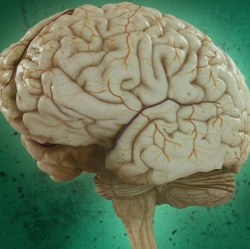
Cognitive behavioral therapy is more or less the gold standard when it comes to talk therapies. Analyses have shown that there’s a very strong, robust base of evidence that CBT can help people who are suffering from anxiety, depression, and other psychological problems, maybe even fear of the dentist.
That doesn’t mean it’s perfect, though, despite all of this success, it still only works for about half of all those who try it, and researchers aren’t really sure why some patients respond while others languish without improvement. If we could tell in advance which patients will be unlikely to benefit from CBT, precious time and resources could be saved by offering them alternative forms of psychotherapy or drug treatment.
We aren’t there yet, but an exciting new finding points in that direction. Researchers report in a new paper in Social Cognitive and Affective Neuroscience that they were able to predict from socially anxious patients’ brain activity whether they would respond positively to a course of CBT.
Within a week of the brain scanning, the participants began a 12-week course of once-a-week CBT. The key question was whether specific aspects of the participants’ brain activity in response to distracting images of social threat would be related to how well they responded to the course of CBT.
The exciting result is that brain activity during the task was related to the subsequent outcomes achieved through CBT. Specifically, the more the participants’ brain activity showed signs that they struggled to control the distracting effect of fearful or angry faces during the task (to get technical, they showed extra activity in the dorsal anterior cingulate cortex, a brain structure involved in managing conflicting attentional demands), the more they tended to benefit from the CBT, that is, the more their self-reported anxiety symptoms were decreased over the course of their CBT treatment.
Levels of activity in other, mostly frontal, brain regions also correlated with success with CBT, such as the supplementary motor area, regions all involved in managing conflicting demands during times of distraction.
The implication is that patients who struggle more, at a neural level, with the distracting effects of social threat, such as a glimpse of a concerned frown or a disapproving glare, have the most to gain from CBT. Results, though preliminary (at a minimum, more research is needed with bigger samples and a control group), add to similar results for other diagnoses, for example, during the last few years related findings have emerged for depression and PTSD (posttraumatic stress disorder). In each case, brain-activity levels during a task featuring threatening stimuli have been related to later outcomes from CBT.
These are encouraging results that offer a tantalizing hint of what may one day soon become a routine approach to pre-therapy assessment. However, there are reasons not to get too carried away just yet. For one thing, this study looked at findings averaged across the group as a whole, so we’re not at the point yet where we can scan an individual’s brain and predict how well they’ll fare with CBT.
